












































Founder / Publisher
Peter Shafran
Co-Founder
Lance Baker
Managing Editor
Alan Greenwald
Chief Strategy Officer
Richard “Ranch” Guerra
Art Director
Rachel Port
Web Developer
James Panzer
Strategic Communications
Advisor
Stu Zakim
Contributors
Asa Angel
Veronica Castillo
Dr. Manesh Girn
Alan Greenwald
Ranch Guerra
Breanna Neff
Rachel Port
RanDe Rogers
Pam Schmiel
Peter Shafran
Rachel Wallach
Pasquale Zinna
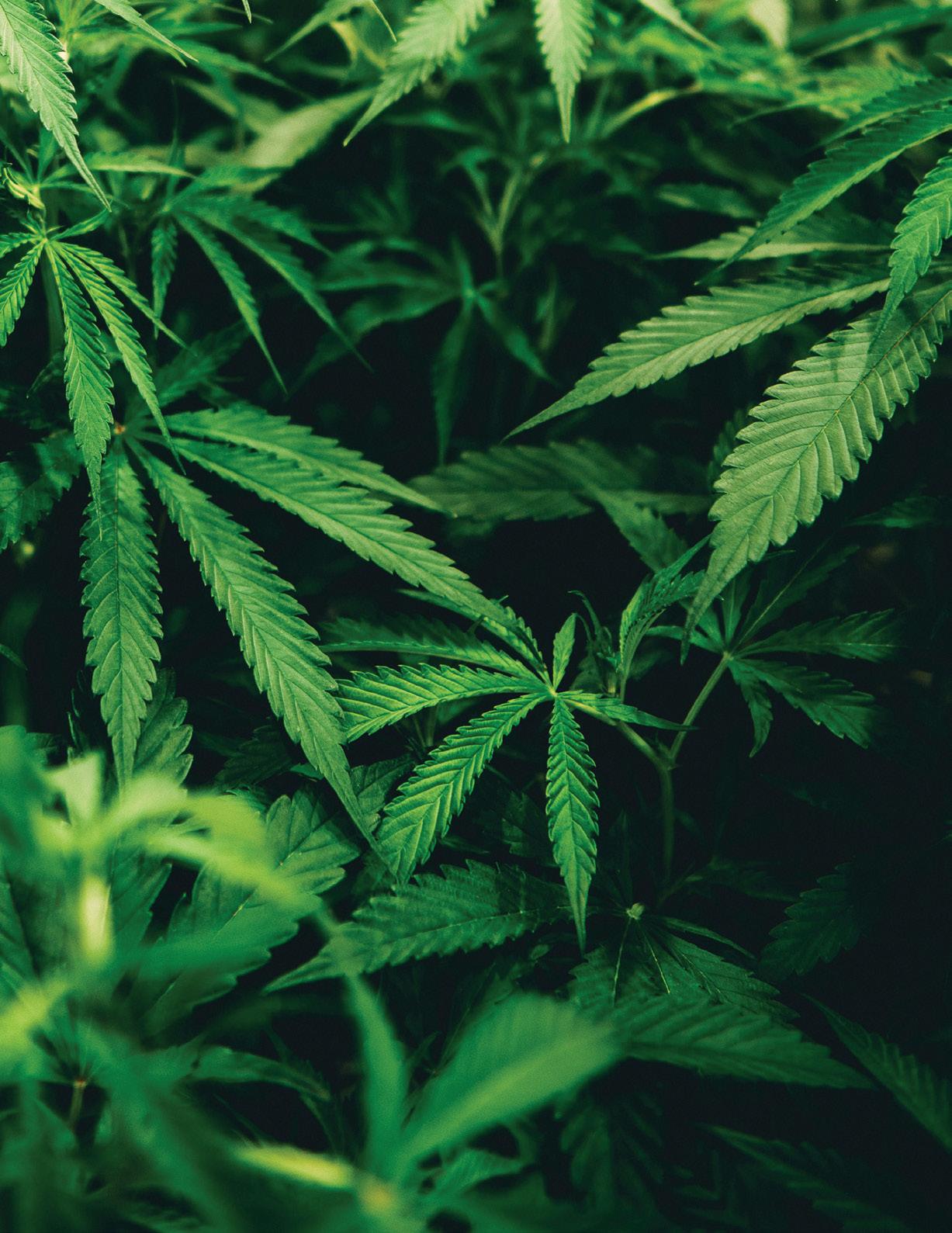
Copy Editors
Rachel Port
Jon Stone
Mary Wachlin
Photographers
John Kramer
Marci Miles
Rachel Port Advisor
Paula Panzer Pink Lion Media, LLC
CEO
Peter Shafran
VP
Alan Greenwald
General Counsel
Lance Baker
CFO
Steve DelSanto
Why ‘The Other’?
The Other takes its name from The East Village Other, a pioneering 1960s counterculture newspaper. Like our namesake, which amplified marginalized voices, we celebrate cannabis culture’s evolution from the fringes to the mainstream. Our name reclaims and honors the journey of the cannabis community from “the other” once stigmatized and hidden— to a position of growing acceptance and legitimacy.
by Peter Shafran
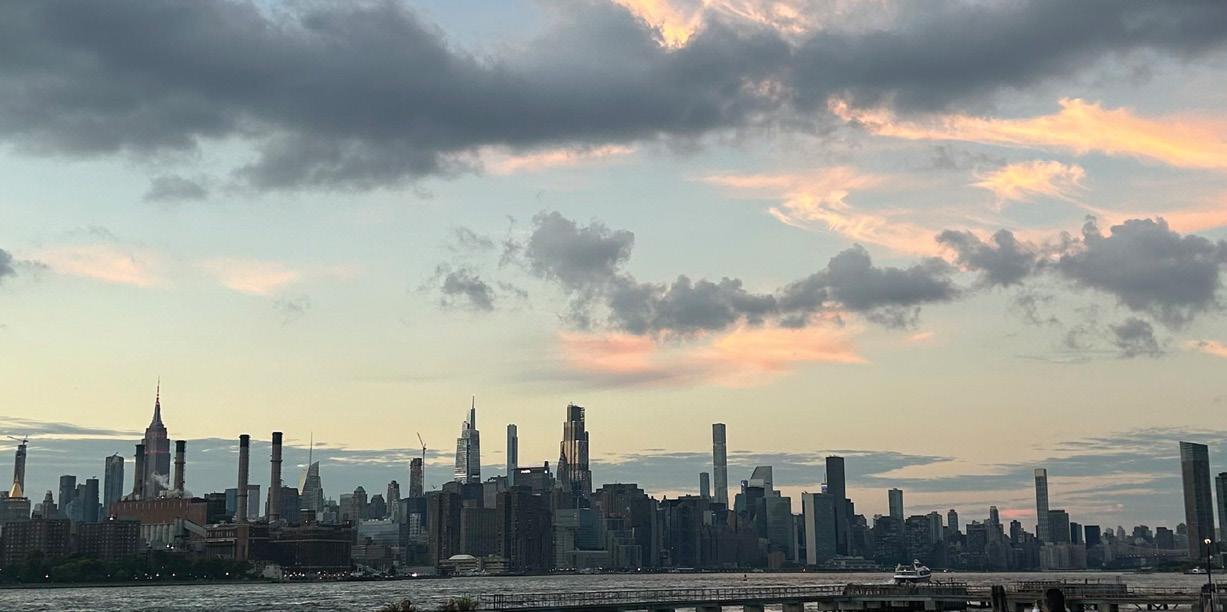
When we launched The Other Magazine last year, we couldn’t have imagined how quickly our story would grow —quite literally—from the rolling hills of the Hudson Valley right into the concrete canyons of New York City. Like the plant itself, this industry refuses to be confined, and we’re expanding our coverage to match. And what timing—as we go to press, New York’s cannabis market is celebrating a historic milestone: $1 billion in legal sales since the market opened.
The Big Apple has always done things its own way, and cannabis is no exception. While our Hudson Valley growers are nurturing their crops in retrofitted barns and high-tech greenhouses, NYC’s cannabis entrepreneurs are getting creative with vertical gardens in Brooklyn warehouses and speakeasy-style dispensaries tucked between bodegas. It’s the same plant, but with a distinctly metropolitan twist.
The numbers tell an impressive story: from a single dispensary in January 2023 to 295 licensed stores (as of January 24, 2025), with 40 new locations opening in just the past month. But beyond the statistics, it’s the human stories that capture our attention.
What’s really fascinating is watching how upstate and downtown are creating something greater than the sum of its parts. Hudson Valley farmers are partnering with NYC distributors, creating farm-to-table—or should we say farm-to-dispensary—pipelines that would make any locavore proud. City designers are heading north to create Instagram-worthy retail spaces in converted barns. It’s a beautiful marriage of rural roots and urban energy.
Of course, let’s not sugarcoat it—the industry faces real challenges. As the market matures, competition is intensifying. While new stores open weekly, average monthly revenues have adjusted to reflect the growing retail landscape. But if there’s one thing New Yorkers know how to do, it’s adapt and overcome. Our coverage captures both the triumphs and the growing pains of this urban cannabis renaissance.
As we begin 2025, The Other Magazine is proud to be your guide to this expanding cannabis landscape, from the highest skyscraper to the most pastoral farm. Whether you’re exploring a craft grow operation in the Catskills or visiting one of the city’s newest dispensaries, you’re part of a movement that’s redefining what cannabis culture means in the Empire State. And with every legal purchase, you’re supporting not just a business, but the community programs funded by cannabis tax revenue.
Light up responsibly (and legally!),

Peter Shafran Publisher

“Vee” Castillo
Adventures While High With Your Girl or Your Guy by Rachel Port
Try ”Sleep Divorce” Until You’ve Tried This by Pam Chmiel
Picks: Local Spots on the Radar by Ranch Guerra
“Ranch” Guerra
Revivals
of the Valley: Your Favorite Budtender
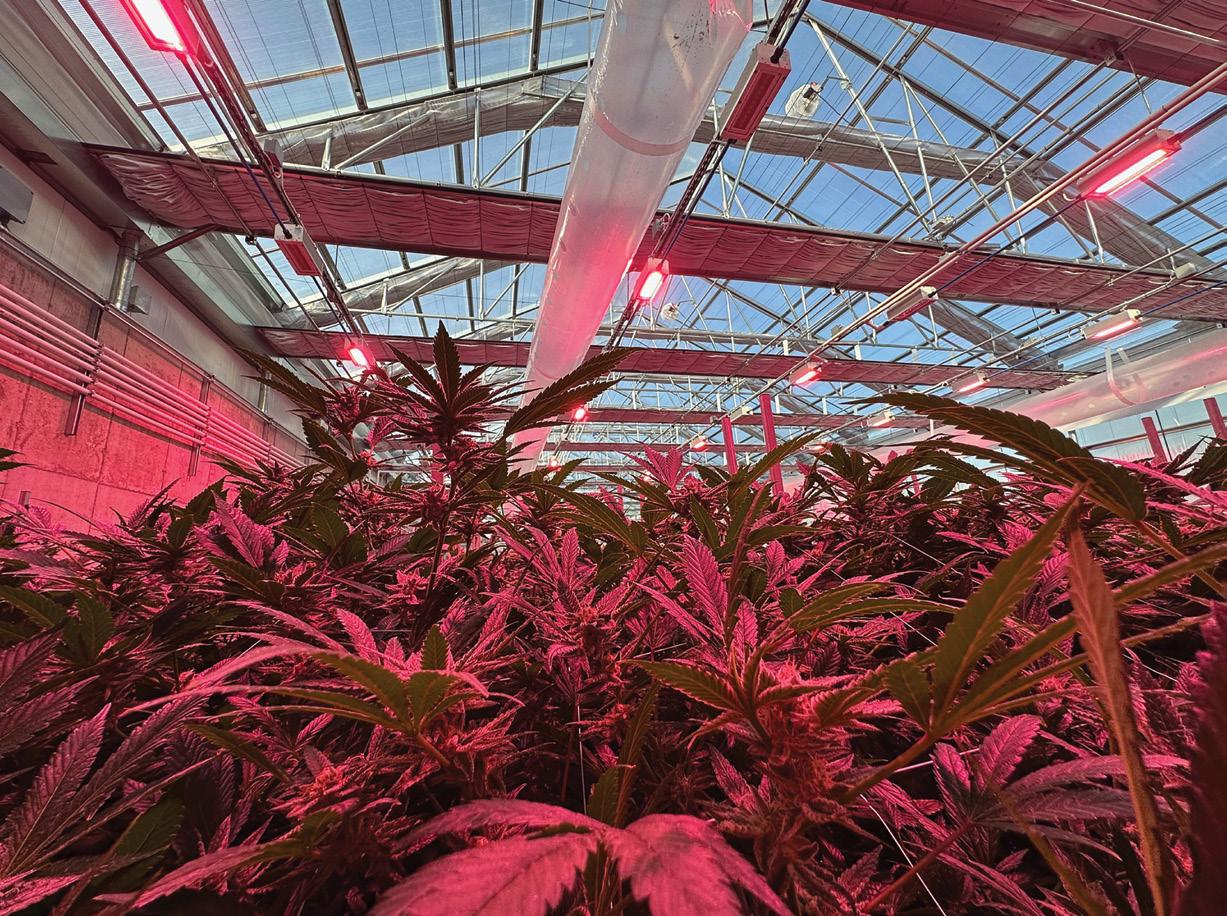

In the evolving landscape of New York cannabis, where authenticity meets innovation, urbanXtracts has emerged as a defining force. Under the leadership of Eran Sherin, the company has transformed a former prison complex in Warwick into something unprecedented: a complete cannabis ecosystem that’s raising the bar for quality and sustainability in the Hudson Valley.
by Peter Shafran
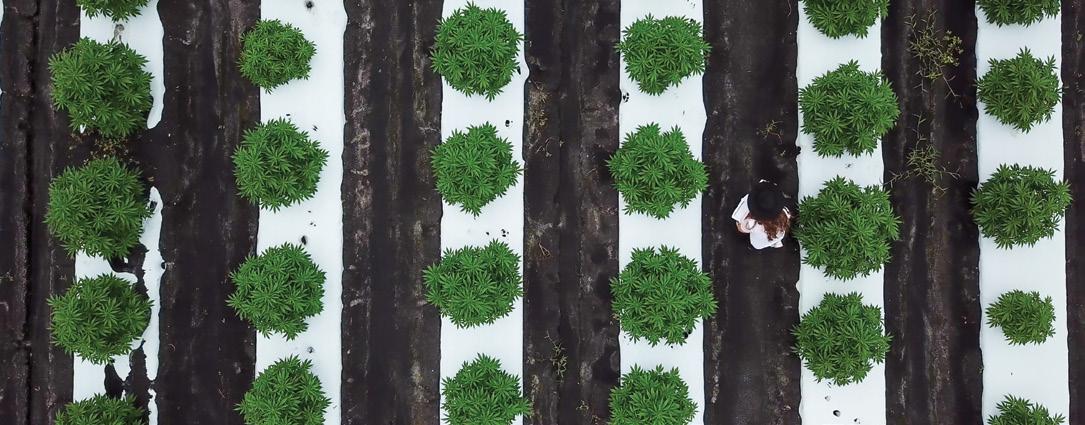
The approach is comprehensive but focused. Four integrated departments operate with remarkable efficiency –cultivation, extraction, manufacturing, and distribution. Each plays a crucial role in their supply chain infrastructure from seed to end products for wholesale. The nursery maintains genetics and grows premium flower, while various methods of extraction yield premier results.
“We at urbanXtracts are specifically focused on premium extracts and premium products. We’re always developing new genetics and searching for what’s next. Right now especially, we’re hunting for innovative strains,” Sherin notes, highlighting the company’s dedication to quality. urbanXtracts’ manufacturing side has flourished through strategic partnerships. Their distribution department

services a growing network of dispensaries across the region, while their facility represents a bold step forward in sustainable cannabis production. The goal: proving that environmental responsibility and operational efficiency can work hand in hand.
The innovative greenhouse design utilizes sophisticated geothermal heating, rainwater recycling, and underground thermal storage. “The entire greenhouse is underground, with the exception of the south-facing wall,” Sherin notes, explaining how this maximizes geothermal benefits while minimizing energy costs. He reports, “During the day, we circulate water through the lights that warm up the water. We store the water underground in tanks. We pump it through the system when it gets cold at night.” All buildings collect rainwater that goes through an RO filtering process before being used for irrigation. They run five cycles yearly with an efficient 14-week system (eight weeks in canopy and continuous cycling through the nursery).
They understand that quality depends on people, so urbanXtracts has implemented an employee stock option plan to create a culture of ownership and excellence. “You make them part of the organization… give them responsibility and an opportunity to learn,” Sherin explains. Combined with their systematic
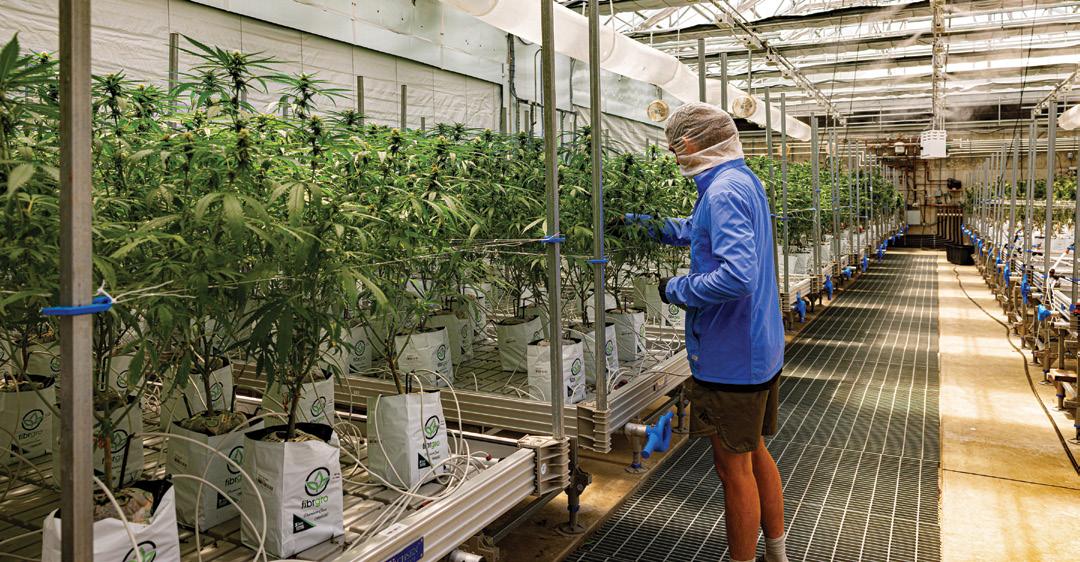
operations and high standards, this approach has enabled them to scale while maintaining consistent quality. Their relationship with the agricultural community in the Hudson Valley has evolved organically. As Sherin expresses, many traditional farmers have experimented with cannabis, seeking new opportunities for cash crops. While some faced challenges with hemp, others have successfully transitioned into cannabis cultivation, finding their place in this new agricultural landscape.
“New York’s rollout is designed for mom-and-pop shops to be successful. It’s designed for small businesses to be successful... It’s not like in other states where 10 or 12 major companies rolled up and became dominant. Here you have many, many people enjoying the industry.”

urbanXtracts stands out in the market with their thoughtful approach to brand curation. Working with ten carefully selected brands, from established names like Wana and Pax to emerging producers like the women-owned Issa Vibe, they’ve created a portfolio that reflects the diversity and quality of modern cannabis. Their regional influence shows as well, teaming with around 25 cultivators across New York State. A vast network has established them as an essential partner for both growers and brands looking to enter the Hudson Valley and NYC markets.
The company’s systematic approach has been crucial to its growth in such a rapidly expanding industry. “Right now we have over 200 dispensaries, but that’s just the beginning. We’re going to see hundreds more opening, and eventually we’ll reach a thousand across New York,” Sherin predicts, acknowledging that selective partnerships will be key to maintaining quality as the market expands. Looking ahead, Sherin’s vision for urbanXtracts reflects both ambition and responsibility. “We want to be a leader. An example of how to operate within the legal framework. And to do it successfully. And to uplift our staff and our brands and our customers.”
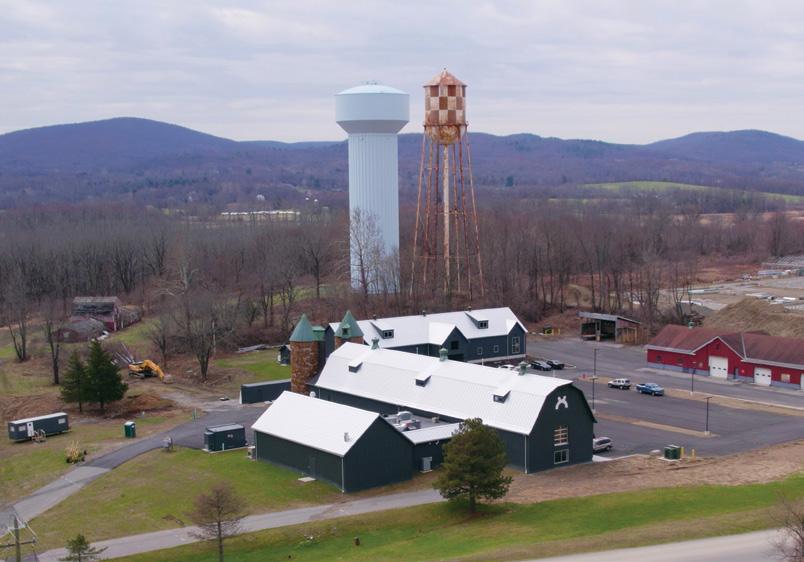
As New York’s cannabis market continues to mature, urbanXtracts stands as a model of what’s possible when vision meets execution. Their commitment to quality, sustainability, and community isn’t just good business–it will help to shape the future of cannabis in the Northeast. From their groundbreaking facility to their thoughtful approach to partnerships, urbanXtracts represents the kind of operation that’s elevating cannabis culture while staying true to its roots. As the market evolves, their influence on New York’s cannabis landscape seems poised to rise.

Revelry 2024, a dynamic two-day cannabis trade show and cultural celebration, was held on October 4th and 5th at Pier 36 in Lower Manhattan. The event highlighted the explosive growth of the cannabis industry and showcased New York’s distinct and evolving cannabis landscape.

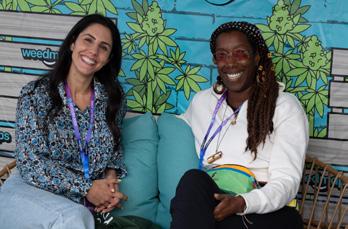













On December 12th, 2024, The Other Magazine’s team joined New York’s cannabis community at ConBud on the Lower East Side for the Cannabis Collective’s festive year-end gathering.


Much more than the menorah was lit at the second annual High + Mighty on December 16th, 2024 in Union Square, NYC. The community celebrated the miracle of legal weed in New York with an evening of elevating and noshing. Photos by Kelly Codrington.


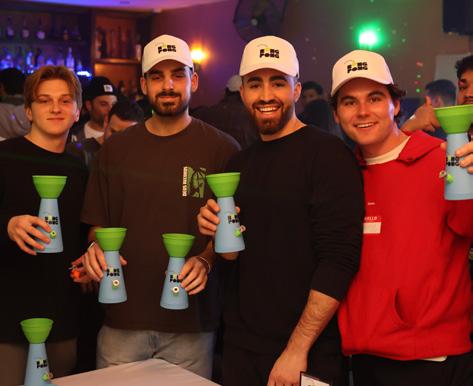




by Peter Shafran
When Walter King opened the doors to Kings House of Fire in Cortlandt Manor earlier this year, it created quite a buzz. This isn’t your average dispensary - it’s a testament to King’s journey from basketball courts to cannabis connoisseurship.
King’s fascination with the cannabis industry began during his college days. As a former Division I basketball player, he was more interested in studying state cannabis laws than celebrating post-game. This early passion led him on a cross-country cannabis adventure, from the laid-back vibes of California to the green hills of Oregon, all while waiting for New York to join the legalization party.
“Growing up in my early college days, I was always infatuated with the cannabis industry, but always from a business perspective and not so much from a user perspective.”
Talk about a slam dunk in real estate! Kings House of Fire found its home in the exact spot where King’s previous venture, Kings and Queens Fun Place, once stood. It’s a location so perfect, it’s almost comical. Just a few steps in either direction would have put the dispensary too close to a school or a park. Talk about threading the needle!

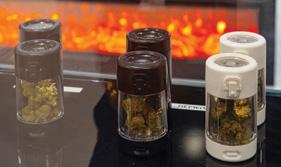

Kings House of Fire, co-founded by mother/son duo, Joan and Walter King, is a lifestyle cannabis brand focused on delivering the highest quality cannabis and cannabis-infused products in a unique environment where each individual customer is seen, heard, and understood. One of the largest cannabis dispensaries in New York, Kings prides themselves with catering to a wide variety of consumers where they can safely purchase, learn, and enjoy cannabis culture.
The dispensary is in northern Westchester, located at 3006 E. Main Street in Cortlandt Manor.
King’s vision for his dispensary? Think Louis Vuitton meets your friendly neighborhood cannabis shop. It’s high-end without the high prices, offering top-shelf products that won’t break the bank. And the selection process? It’s like a democratized cannabis Olympics, with regular and master budtenders testing and voting on what makes the cut.
“Think of it like the Louis Vuitton store for purchasing cannabis, but not the high prices that are in Louis Vuitton because we do have the best prices in the area.”
But Kings House of Fire isn’t just about selling products—it’s about cultivating community. King proudly supports local producers, stocking Hudson Valley brands like Gazoont and Hepworth. He’s also big on education, helping customers navigate the transition from the legacy market to legal dispensaries. Think of a cannabis classroom without the boring lectures.
Despite the challenges of opening a cannabis business in a newly legalized market, King’s optimism is as high as... well, you know. He sees this as more than just a business—it’s a community hub, a relationship builder, and a driving force in reshaping the cannabis landscape in the Hudson Valley and beyond. Looking ahead, King dreams of spreading the Kings House of Fire experience throughout the Hudson Valley. And for now, he recommends first-time visitors try the MFNY pre-rolls or any of Dank’s flower products.
“I just want all my customers to know that they’re heard, their opinions valued, and I’m gonna do my best to make sure that they remain a customer.”
It’s clear that Kings House of Fire is not just a dispensary, but a royal experience in the world of weed. King says, “I hope everyone could just get to experience [it] at least one time.” Whether you’re a cannabis connoisseur or just cannabis curious, they are ready to roll out the green carpet for you. Because after all, everyone should feel like royalty in the kingdom of cannabis.



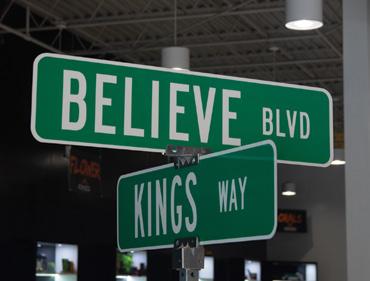
by MJB Fresh

Whether visiting the observation deck of the Empire State Building, kicking autumn leaves on nature paths in upper Manhattans’ Fort Tryon or Inwood Park, eating Dim Sum in Chinatown, meditating at the Twin Tower reflecting pools, or singing out-of-tune Beatles songs at Central Parks “Imagine” memorial, the “212’s” greatest adventures become exponentially more enjoyable when done on the right day, at the right time... smoking the right weed!
Shit, sit me underneath the Brooklyn Bridge on a warm Tuesday summer evening with a fatty, I’m good for three hours! But check this out... At the westernmost end of the 7 train line, on any Thursday evening in July, a special treat awaits... Vinyl Nights.
A visit to the Hells Kitchen Alliance-sponsored “Vinyl Nights” disco party smack in the middle of Hudson Yards, in Bella Abzug Park, followed by a rare solitary stoner space hike down the Highline, is no exception to the “right day, right time, right weed” rule!

Shhh... don’t tell ANYONE that there is this much free Freak Brothers frolic and fun to be found in midtown!
Vinyl Nights is time travel: it’s ‘Lost in Space meets Star Trek’ level transposition to a joyous musical era known as disco, in a crime-ridden 70’s gritty ‘Saturday Night Fever meets Shaft’ NYC reality. At 7 p.m., as the blazing summer sun reflects off the Hudson River and the glass and metal exoskeletons of overpriced internationally acclaimed architectural empty behemoths, an unexpected badass disco party is starting to buzz. This is the real deal!
By 7:30 p.m., every gay, straight, black, white, Latin, Irish, and mixed breed city boomer disco prince and bad girl princess from Hell’s Kitchen to Harlem, Bronx, Brooklyn and Queens have shuffled off the 7 train, into dreamy
There’s bad boys selling homemade $5 fruity-looking mystery beverages and cold beers from coolers. There’s bling blinding the eyes (yes, coke spoon necklaces!), and Yankee baseball caps pulled down low. Many folks are dressed to kill... and dance. A crew of aging midtown ballerinas and Ballroom drag queens mingle with ‘break’ and ‘robot’ masters, and they share their “moves,” smiles, drinks and pre-rolls! Pillows of sweet bud fill the air, and deals are going down! Just mind yer bizniz and boogie!
Huge P.A. speakers pound out finely curated mixes from real-deal NYC disco DJs and MCs from “back in the day,” right up to today. Shit, last summer, Jellybean Benitez was guest spinning–Google him, I dare you!
It’s the most real, back in the day, NYC street party I can conjure up in my brain, straight outta Saturday Night Fever, smack dab in the middle of the most misguided piece of urban planning of the new millennium (don’t even get me started with the Death Sculpture honeycomb monster commission that had to close its doors after numerous jumpers).
I’m not sure how The Hell’s Kitchen Alliance can partner with Vinyl Nights and Hudson Yards to pull this off every summer. Private security keeps a fairly laissez-faire approach to the frisky underbelly of this disco lair... trust me, there’s shit going down! NYPD steers clear as well. Vinyl Nights... It’s a little bit of joyous stoner boogie-down anarchy in an otherwise buttoned-up and tightly wound elite playground. And I’m totally here for it, pipe in hand!
Next time, if you can keep a secret, I’ll tell you about the amazing walk home at The High Line’s closing bell! I need 500 more words for that! Keep on blazing!
“When you smoke the herb, it reveals you to yourself.”

- Bob Marley

by Veronica “Vee” Castillo
New York’s adult-use cannabis market, legalized in 2021, allows adults 21 and older to purchase cannabis products from licensed dispensaries. By 2024, the state has issued over 400 retail licenses and aims to expand to more than 1,000 dispensaries statewide. In the previous issue, I shared my first experience consuming cannabis and reviewed three products from New York’s legal market. This time, I’m diving into three new cannabis products from the state’s rapidly expanding market.

Brand: Rosa Reta
Product: AYO, 0.5G, Live Rosin, All-in-One Vape
Rating:
Rosa Reta, a lifestyle cannabis brand from Puerto Rico, recently expanded to New York. It offers 100% solventless live rosin vapes crafted from fresh, frozen flowers. With a selection of over 15 strains, I decided to try AYO for this review. With 70% active cannabinoids, it did not disappoint.
I loved how my first inhale tasted like candy. It was such a pleasant surprise. I was impressed that it only took four inhales to feel the effects kicking in, and by eight, I was floating in pure bliss. This one was incredibly smooth, unlike some of my previous experiences. The oil had a stunning amber hue, and I remember calling it a “liquid gem.” I was dealing with cramps during this session, but AYO completely eased my pain and discomfort. Throughout the day, I kept sampling, an inhale here, a couple there, and it kept both my body pain and irritation at bay.
2
3
Brand: Revert Cannabis New York
Product: Sungrown, Strawberry Amnesia, 3.5G
Sativa Flower
Rating:
Revert Cannabis NY is a women-grown and veteran-operated company with rows and rows of options, but I chose Strawberry Amnesia flower. I’d give this product the highest possible rating on any scale. The flower was a vibrant green, 861 mg of THC in the bag, covered in sparkling crystals, and burned with pure white smoke and ash. My first inhale delivered a mouthful of rich berry flavor. Although it’s sun-grown, my personal favorite, the inhales were impressively smooth. I usually need a full blunt to feel the effects due to my high tolerance, but this time was different. By the halfway point, I could feel the plant massaging my head.
Of course, I kept smoking; it was delicious and offered such a beautiful, uplifting experience. I paired it with salsa music, and the clapping sounds felt so vivid, like I was immersed in the vibrations of the rhythm itself. I enjoyed this flower all day, feeling incredibly grateful for the experience. When it was gone, I couldn’t help but feel a little sad–it was that good.
Brand: Entourage by Nanticoke
Product: Fast-Acting Sleep Tablets
Rating:
These tablets, developed by greenhouse-growing siblings, come in a 20-serving package, with each tablet containing 5mg THC and 10mg CBN. As someone with high tolerance, I found two tablets necessary for the full sleep-inducing effect, though those with low to moderate tolerance may find one tablet sufficient. I do want to point out that the combination of one tablet with a small amount of smoking provided deep relaxation.
The two-tablet dose put me to sleep, and I appreciated waking up feeling refreshed without the typical morning grogginess. I noticed smoking less than usual the morning after. I can only imagine it was because the tablets were still providing a cushion of elevation.



by Annette Fernandez and Kassia Graham
On March 31, 2021, the Marihuana Regulation and Taxation Act (MRTA) ended cannabis prohibition in New York. Before this, advocates and allies worked towards halting former Governor Cuomo’s non-equitable Cannabis Regulation and Taxation Act, which would have kept justice-involved people out of the legal industry. The MRTA is the most progressive cannabis law in the United States; at least 50% of retail businesses must be owned by those disproportionately impacted by the war on cannabis. Various social equity programs were introduced in other markets, but most have had dismal results. So far the MRTA has fared much better, reflected in the number of dispensaries owned by social equity applicants.
In 2024 the New York market saw $1 billion in sales, which bucks the national trend for businesses owned by social equity licensees. A report from the New York Office of Cannabis Management bolsters this; Social and Economic Equity (SEE) licensees account for 38% of cultivators, 48% of processors, 38% of distributors, 58% of micro retailers, and 81% of retailers in the state.
Unfortunately, Registered Operators (ROs), who were the first to sue the state for an injunction against the Conditional Adult-use Retail Dispensary (CAURD) program, were able to cut their wait time to enter the market from three years to just one. Also, ROs could negotiate payment plans for their market entrance fees. The CAURD program is instrumental in giving those who are justice-involved an opportunity to enter the legal cannabis industry.
In December 2024, another injunction was launched against the program and provisional licensees in the December queue. Unlike the November queue which the claimants are in, the December queue is highly representative of SEE and applicants from communities disproportionately impacted by the War on Drugs. To say additional provisional licenses would oversaturate the market means one is not entrenched in the data.
The governor’s office has not provided material support for the legislation and has negatively impacted the outcomes for SEE applicants. The funding the state promised never materialized, and the New York Social Equity Cannabis Investment Fund, run by a subdivision of the Dormitory Authority of the State of New York (DASNY), was a massive failure that only delivered 21 dispensaries, costing $78 million.
Consumers and industry professionals benefit from the diligent work of advocates who want plant medicine accessible to all. The MRTA envisioned businesses that are reflective of the community as well as hubs for innovation. Seed-to-sale in New York presents an opportunity for the industry to develop top-notch cannabis over time. We look forward to seeing the micro licenses and small-batch cannabis entering the market in 2025.
As of today though, the market is showing signs of early monopolization as the top 32% of the industry in New York is being driven by only 10 brands, most of them from corporate cultivators with 100k square foot canopies. What’s occurring is the opposite of what the MRTA demands. We hope that in 2025 budtenders and customer-facing employees across the supply chain will dig into educating the consumer on where their dollars are going. We need more informed consumers who will advocate for a fair and equitable market, one that’s reflective of the diversity across the state, by shopping their values. For New York, buy New York.
Founded by Annette Fernandez, Amy Chin, and Kassia Graham, High Exposure Agency is a multidisciplinary company serving small businesses in New York State and beyond.

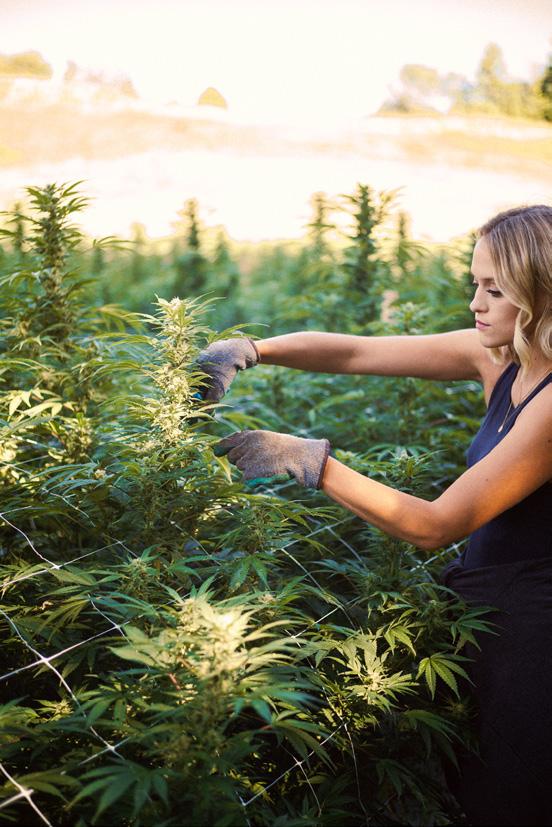








by Rachel Wallach

The Silverton, the smell-proof model stash case from Stashlogix, is a safe bet for new and knowledgeable cannabis lovers. The outside of the case is a felt-like material and has a convenient handle for easy travel. It has a combination lock with detailed and stonerfriendly instructions on how to set it. The case opens like a lunch box and consists of smell-proof insulation with divider pieces and a netted space with zipper on the upper side for storage.
The set includes a small metal tool for dabbing or cleaning a piece, two smell-proof bamboo joint holders plus custom divider pieces that are smell-proof and easily refreshed with a blow dryer. It also comes with a small circular metal holder for kief or concentrates and a “smart jar” for flower.
There are instructions with a link to a mobile app where you can keep track of strains.
The smart jar for flower storage is interesting: a nice sized jar that seals closed with a wooden lid including a meter that reads if the flower inside is too moist, ideal, or dry. I tested this meter with three strains of my own and must admit that I did not notice much of a difference in the meter. Maybe I need to find some cannabis that is more of an “ideal” humidity.
All in all, a very useful and smell-proof stash case and kit. The combination lock with plenty of storage spots and adjustable pieces make it handy for any cannabis connoisseur or regular stoner. My rating would be very groovy!
Dr. Dabber Switch 2 is an innovative home electronic dabbing device, with a sleek and modern style that changes the concentrate market. Our kit included a rig, hot knife, charger with cable, along with instructions to scan a QR code to allow for easy installation and use.
Consumers use the mobile application to seamlessly heat the unit up, set temperature and dab duration times, and also customize the LED lights. A tech-savvy, fun, entertaining and professional experience.
I viewed several helpful videos for instruction since I am a visual learner, especially with technology like this. I found the informational videos from their website and YouTube very useful, with plenty of tips on how to remove certain pieces and how to set it up.
Once you’re ready to set the temperature and load your cannabis concentrate, it gets easy from there. I really appreciate that they added a loading pen, also known as a hot

knife. Just like it sounds, this tool heats up and melts concentrates into the rig. It really helps with the more difficult ones, such as shatter, and makes others more convenient.
Cannabis tastes delicious with this rig. While glass rigs are great for beginners, the consumer is able to acknowledge, even savor the terpenes and flavors so much better with this setup. I can say with certainty, having recently used electric rigs for the first time, the difference is noticeable.
I had the opportunity to try the well-known Puffco Peak alongside the Dr. Dabber Switch 2. The switch is larger, more of an at-home piece versus a portable dabber. It resembles an espresso machine, so “MoOiAmATree” on YouTube calls it the perfect name in their review: the Nespresso of dabs.
The Switch 2 is an upscale, modern way to dab at home. A great device for new and seasoned dabbers. Perfect for a fancy gift, an investment for oneself or a nice new addition to your cannabis collection.

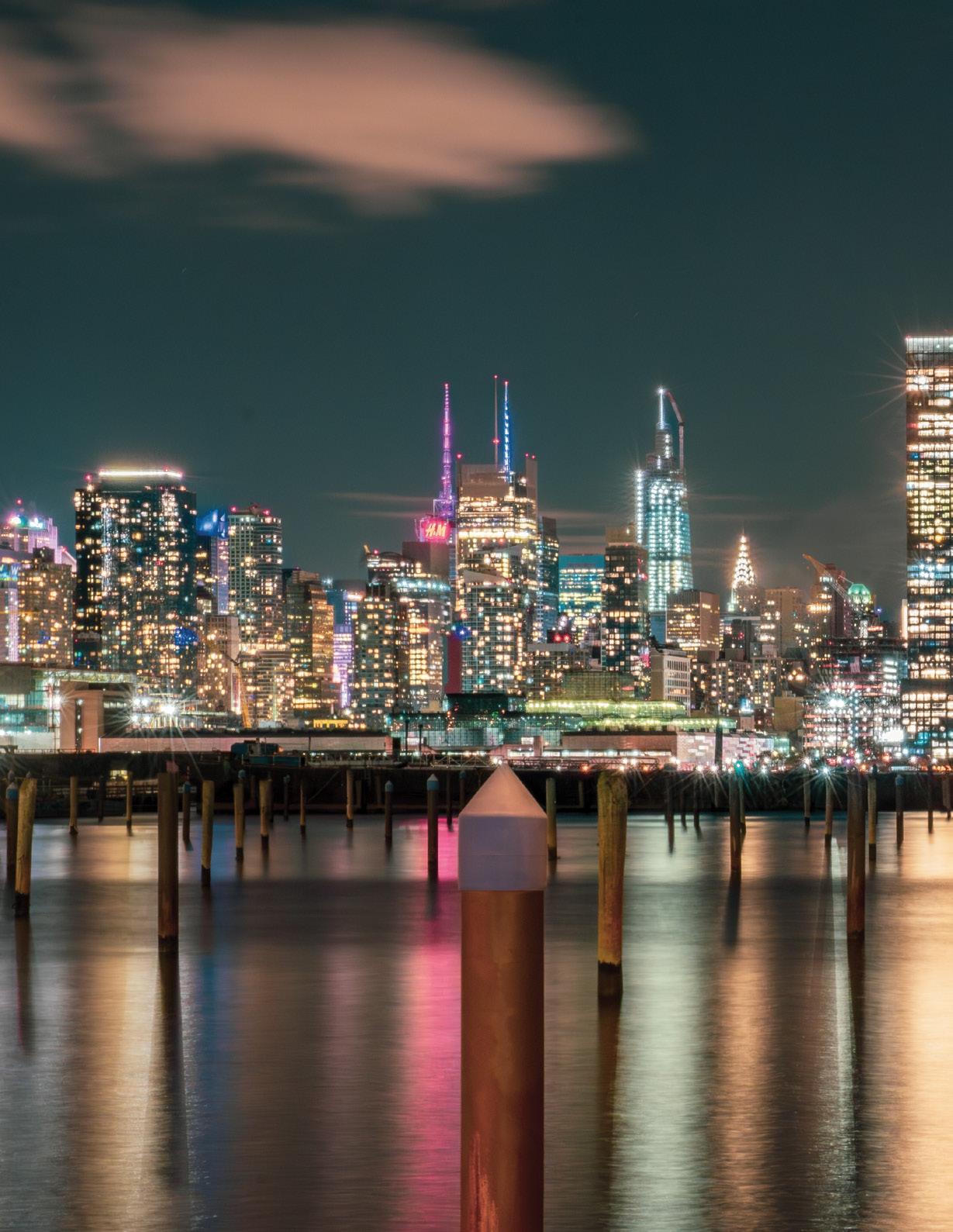

Osmany Cabrera is a New York-born artist of Caribbean descent, renowned for his interdisciplinary approach. His work spans sustainable architecture, including Hempcrete, digital fabrication, large-scale sculpture, and visual media. Cabrera’s notable photographic contributions include a permanent photo gallery showcasing New York City images throughout LaGuardia Airport’s Terminal B. osmworks











HEMP HUNTER LABS INC OCM-AUCP-22-000002 For use only by adults 21 years of age and older. Keep out of reach of children and pets. In case of accidental ingestion or overconsumption, contact the Poison Center hotline 1-800-222-1222 or call 9-1-1. Please consume responsibly. Cannabis can be addictive. Concerned about your cannabis use? Contact the New York State HOPELine by texting “HopeNY”, calling 1-877-8-HOPENY, or visiting oasas.ny.gov/HOPELine.
Loving-kindness (or metta in Sanskrit) is a key component of a well-rounded meditation practice characterized by intentional moments of well-wishing that foster connection and resilience. Like the word “sports,” meditation is a broad term encompassing many practices. While all forms of meditation aim to foster healing and growth, this specifically focuses on sending well-wishes to others and increasing our capacity to love while contributing to their well-being.
Based on incredible scientific research, there are known benefits of routinely engaging in loving-kindness. Perhaps the greatest benefactor is actually the one practicing it. Some of the rewards listed below are seen in our physical, mental, and emotional health:
1
POSITIVITY
Seven weeks of practice increases positive emotions like joy, gratitude, and hope. This leads to greater mindfulness, life satisfaction, and reduced depressive symptoms.
2
PAIN/DISTRESS
Loving-kindness meditation is associated with greater decreases in pain, anger, and psychological distress than the control group.
3
DEPRESSION
Effective for self-critical individuals in reducing self-criticism and depressive symptoms, and improving self-compassion.
by Asa Angel
In today’s busy world, a few minutes will still have meaningful impacts. More focus offers even greater benefits. To implement this practice into your life, it simply requires some time and attention.
When you feel ready, just close or soften your eyes and take a few deep breaths to ground yourself into the meditative space. Then, while thinking of someone you love, you can start to send these wishes to them:
May you be happy May you be healthy May you be safe May you live with ease
After repeating these phrases silently three times, you can release that person from your awareness then bring a vision of yourself into your mind. Repeat these phrases, sending loving-kindness to yourself. If you wish to take the practice further, send the wishes to someone you don’t know very well. Finally, to someone with whom you might be having some difficulty.
Incorporating loving-kindness into your daily life nurtures the growth of compassion, joy, and healing. Whether you’re looking to enhance your well-being, navigate challenges with greater ease, or simply extend kindness to others, loving-kindness meditation offers a path toward growth and balance that is accessible to all.
by Breanna Neff: IFT-Certified Food Scientist, Brelixi Founder & RanDe Rogers: Executive Chef & Restaurateur, Brelixi Co-Founder
Get cozy with this cannabis-infused tomato soup! It’s like a warm hug in a bowl, with roasted tomatoes, garlic, and cannabutter.
Determine your potency:
1. Weigh your cannabis flower
2. Calculate THC: (Weight in mg) x (THC %) = Total mg THC
Cannabutter:
Ground cannabis flower
3 sticks unsalted butter
Soup:
3 1/2 pounds ripe tomatoes, quartered
3 tbsp EVOO
1 large onion, diced
5 cloves garlic, minced
Cannabutter (amount depends on desired potency - see note on left!)
3/4 tsp smoked paprika
1/4 tsp red pepper flakes
2 1/2 cups vegetable broth
1/2 cup fresh basil
Salt & pepper
2 cups grated cheddar cheese
1. Decarb: Spread cannabis evenly on a sheet pan, bake at 240°F for 30 mins, shaking halfway.
2. Infuse: Simmer decarbed cannabis in butter for 1-2 hours. Strain out plant matter with sieve.
3. Roast: Toss tomatoes with EVOO, salt & pepper. Roast at 450°F for 30-40 mins.
4. Sauté: In large saucepan over medium heat, sauté onion & garlic until soft in cannabutter. Add spices.
5. Simmer: Add broth, basil & roasted tomatoes to pan. Bring to a boil, then simmer for 15 mins.
6. Blend: Puree. Season. Add cheddar cheese to your liking.
7. Enjoy responsibly!

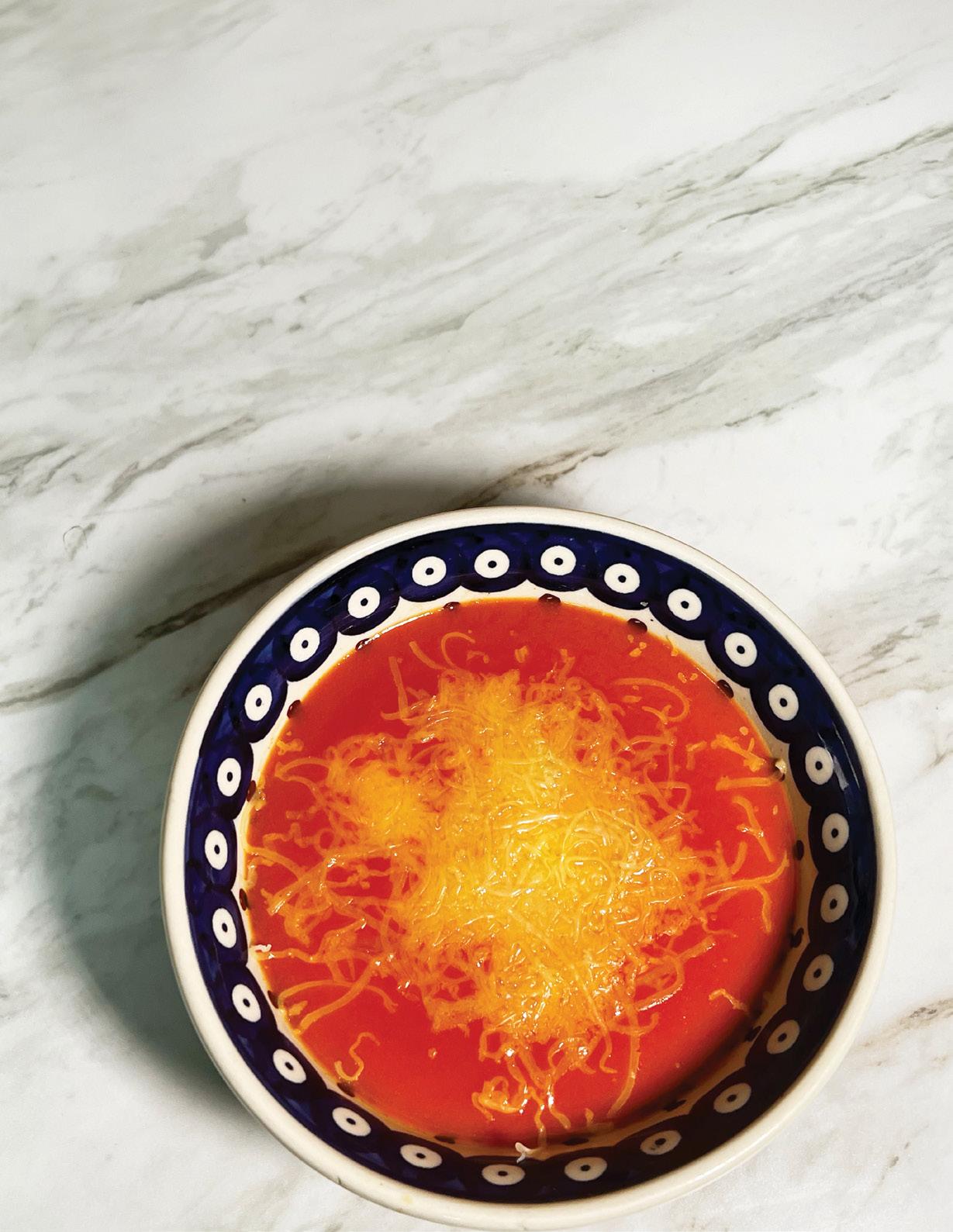



The work and lives of movement pioneers still burn bright, thanks to these advocates.
by Veronica “Vee” Castillo


As the cannabis space evolves, remembering the difficult and enlightening lessons we’ve learned along the way is vital in encouraging a prosperous and inclusive industry going forward.
Queer In Cannabis (QIC) is a growing U.S. reform group founded by gay, Latino entrepreneur Rich Magaña. QIC’s mission is to ensure the cannabis industry remembers its LGBTQIA+ roots.
In the 1970s through 1990s, LGBTQIA+ activists laid the groundwork for today’s cannabis reform. Dennis Peron, known as “the father of medical cannabis,” co-authored California’s groundbreaking Proposition 215 while his partner Jonathan West battled AIDS.
Mary Jane “Brownie Mary” Rathbun revolutionized medical cannabis by distributing marijuana brownies to AIDS patients at San Francisco General Hospital, ultimately becoming a leading advocate for medical legalization.
Kiyoshi Kuromiya, an aide to Dr. Martin Luther King Jr., created the first HIV/AIDS newsletter while advocating for cannabis access, and Paul Scott secured crucial funding for HIV/AIDS services in Black and Brown communities while championing cannabis rights.
These pioneers’ work during the AIDS crisis of the 1980s-90s shaped modern cannabis legislation, particularly in California, where their advocacy led to the nation’s first medical marijuana laws.
Nearly thirty years later, few organizations bridge the gap between LGBTQIA+ rights and cannabis reform as effectively as Queer In Cannabis. With Magaña’s deep roots in both the queer and cannabis communities, QIC emerged from his blend of experiences as much as the legacies of oppression and the resulting activism.
“Strangers become friends and drama stays at the door.”


QIC interweaves education, advocacy, and community building toward accomplishing its mission. When Magaña worked in cannabis marketing, he noticed many LGBTQIA+ industry professionals were unaware of the queer community’s pivotal role in cannabis legalization. It inspired Magaña to dedicate himself to helping preserve and celebrate this history. Through workshops delivered to brands and dispensaries, QIC ensures legendary queer cannabis activists are remembered and honored.
In their ‘Trailblazers’ series, which features accomplished LGBTQIA+ cannabis professionals, QIC elevates queer visibility in the cannabis community. QIC-organized meet-ups foster meaningful networking opportunities. Both strongly encourage forming mentor/mentee relationships.
Raising awareness about how businesses can show their support is another way QIC advocates for the marginalized. “Companies can commit to consistent shelf space and ordering from LGBTQIA+-owned brands year-round, not just during Pride month,” said Magaña. “They can also partner with organizations like QIC and The Jane Project to enrich local communities, recognizing that cannabis consumers appreciate brands that demonstrate an authentic commitment to inclusion.”
QIC partners with regional organizations like Worcester Pride and the Massachusetts Transgender Political Coalition. Nationally, they support The Trevor Project and Advocates for Trans Equality, both of which address critical issues like youth suicide prevention and trans rights advocacy. QIC’s community events including queer walking tours and drag shows create safe spaces where, as Magaña says, “strangers become friends and drama stays at the door.”
Preserving history, creating safe spaces, and supporting local and national initiatives, QIC harnesses the power of the community to help keep it thriving. As Magaña says, “The cannabis community remains ‘the heartbeat’ of the industry, and organizations like QIC help ensure that heartbeat stays strong and inclusive.”
by Rachel Port
The Shed: 545 W 30th St, NY 10001
I’ve been eager to see Luna Luna—the world’s first art amusement park—since I originally heard about it. As an artist and lifelong astrophile, I’ve always been fascinated with celestial objects. My great grandfather, an antiques collector, passed down moon-themed postcards, my dad would show me constellations at the beach in the summer, and in college, I painted a series of cosmic oil paintings.
My mom, an art historian who worked at Sotheby’s in the ‘80s, visited me in December. When she saw a brochure for Luna Luna, advertising, “Basquiat, Haring, Lichtenstein, Dalí, Hockney and More,” she was instantly sold. I ended up going with a group of girlfriends in early January. I brought my favorite Wyld Sativa Enhanced Raspberry Gummies to share with my “canna-date.” The issue is that I like to do my own thing at museums more than one companion eventually leads me to be the odd woman out, wandering alone, taking my time. With cannabis in the mix, I get hyper-focused and time truly gets away from me. So, as expected, I spent the first half exploring on my own. I enjoyed diving into the timeline of events leading up to the Luna Luna’s creation. Highlighting movements such as Dadaism, Surrealism, Vaudeville, and Cabaret, it perfectly set the stage for what was to come.
Luna Luna, created by André Heller, first opened in Hamburg in 1987 and featured rides and attractions designed by many popular artists at the time. It was meant to go on a global tour, but was delayed due to litigation and spent 35 years abandoned in

the Texas desert. The park’s attractions have been meticulously restored with no instruction manual on how to put them back together.
Each attraction has its own museum label not only describing the artist’s work, but also includes information on how it was originally meant to be experienced, pictures of its original state, and the moon design each artist made for the original park’s graphics. I was highly amused that one of the original experiences, “Palace of the Winds,” conceived by founder André Heller and artist Walter Navratil, included a live violin performance accompanied by farts.
In the second half of the exhibition, you are immersed in the Luna Luna universe, where you can not only view the attractions, but be a part of them. I happened upon a couple getting married in the Wedding Chapel. It was originally designed so “anyone and everyone can marry what and whom they want.” At the time, this vision of marriage was a radical idea. It was illegal for samesex couples to marry in Germany in 1987, but here, those rules did not apply.
“For artists of the post-World War II period, art was a powerful tool for questioning society’s values. It was a way to both engage with and escape the twentieth century’s conflicts and traumas. Luna Luna’s emphasis on joy and play, and its democratic values of audience participation, were born of a desire to channel the power of art to ensure that fascism could never again take hold of the public imagination.”









I got a text that my friends were at the front of the line for the Dalí experience, so I joined them (one perk of going with a group). In PonciliLand, you feel like a kid again, playing with gigantic foam shapes, while actors appear in the main space every 20 minutes or so in fun, colorful costumes. In one scene, three of the performers asked me to spin with them it was so cute. The exhibit truly creates a sense of inclusion, togetherness, and playfulness. Why don’t we have more art amusement parks? I guess that’s what Burning Man is for.
The gift shop has some really cool items. The archival T-shirts are from the original Luna Luna park, so they’re vintage, unique, and extremely expensive. I did get a tote bag though (not vintage).
If you’re reading this past February 23, you have missed your chance to see Luna Luna at The Shed in Hudson Square, but have no fear! Next stops on the tour include Dallas, Albuquerque, and Phoenix.


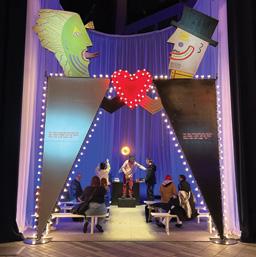


It’s winter. It’s cold. You know what northern Europeans do in the winter when it’s cold but also any weekend in the summer after a long party?
SAUNA! It’s a cultural revolution. If you’ve never been to a sauna… what are you even doing with your life?
I recently went on a date to Akari in Williamsburg. It was a little funny because you have to be silent in the sauna, versus at Bathhouse, which is more social. Also, fun fact, Bathhouse has pools that are heated by Bitcoin mining. I’ll let you decide how to feel about that.
I was so sick; coughing up a lung on my way to Akari (which is why he offered to bring me there in the first place). I definitely felt out of my comfort zone with zero makeup on, in a skimpy bathing suit, visibly and audibly ill, on a first date, but since it was the first meeting, he had nothing to compare it to it’s entirely uphill from there.
If you really want an experience, go to Othership in Flatiron. They have guided classes I probably wouldn’t have been able to stay in the hot or cold for so long if it hadn’t been guided. It was equally the hottest and coldest I’ve ever been in one short period of time. Othership is home to North America’s coldest ice baths; they are officially freezing. Also, it’s flipping gorgeous in there. If you’re looking for a sauna with * vibes *, this is it.
While I have read that combining cannabis with sauna can help relax muscles even more, I actually would not recommend weed for this particular experience. THC activates the body’s “fight-or-flight” response, leading to an increase in stress hormones that increase heart rate and blood pressure, and cause vasodilation, which can also lead to an increase in heart rate. If you do want to take an edible, smoke, or vape beforehand, I would just look for something with a higher amount of CBD to keep you relaxed, like the Ayrloom Calm High Potency Vape

Xanadu Roller Arts
262 Starr St, Brooklyn, NY 11237
I was lucky to have a tour of this space in December of 2023, before it opened. It was just starting to be built out, so everything was colorless. I just recently went back this past December to check it out for the Deep Playa Winter Wonderland party, with a “Club Flush” takeover by Banana Split Collective, and oh my god, the interior is incredible! The designs are so well executed, the colors are vibrant AF, and the textile patterns look like they came straight out of an 80’s sitcom. We smoked a Ruby Doobies Blue Dream Pre-Roll outside before going in to skate. I was nervous because the last time I skated, I fell flat on my ass and was sore for four days, but luckily that didn’t happen again. Skating ended promptly at 10PM and the party shifted. Listen to me when I say it is a GREAT place to host a party. My friends even set up a DJ booth in the bathroom for a mini Boiler Room style boogie. 10/10 would return.

If you know about something canna-cool going on in the city that I should bring a date to, let me know! You can reach me on Instagram:

by Pam Chmiel
The American Academy of Sleep Medicine recently reported that over one-third of Americans have opted for “sleep divorce,” a growing trend where couples sleep in separate rooms to avoid disruptions. Many everyday and celebrity couples (i.e., Cameron Diaz and Benji Madden) have publicly discussed their separate sleeping arrangements. While the idea of sleeping apart may seem unromantic, it’s becoming increasingly common as people grapple with the challenges of getting quality rest.
Have you and your partner been forced into separate rooms because one person’s sleep habits are wreaking havoc on the other’s rest? Whether it’s snoring, tossing and turning, temperature issues, or stress-induced insomnia, couples are taking extreme measures. Remedies like herbal teas, yoga, or even sleeping pills may offer temporary relief, but the struggle for a good night’s sleep persists for many.
If you’ve tried every remedy under the sun with no luck, maybe it’s time to give cannabis gummies a shot. Kiva, the maker of Camino gummies, did a study that found that 76.5% of respondents who currently use cannabis with CBN found it helped them ‘not just fall asleep and stay asleep,’ but to improve their ‘overall quality of sleep, offering a potential alternative to Sleep Divorce for couples facing sleep disruptions.”
An astounding amount of Americans who sleep with a partner have an issue getting a good night’s rest because of bed sharing.
However, 64% say something is preventing them from sleep divorcing...
Zentrela, an AI-neurotechnology company based in Canada, has scientifically proven the effects cannabis has on a consumer’s mental state using EEG technology to measure brainwave data from individuals under the influence of cannabis during human trials. One study demonstrates that CBD and terpenes together can stimulate a relaxed or sleepy state of mind. Another study highlights how terpenes enhance the effects of cannabinoids through the entourage effect, showing significant discrepancies in efficacy for products lacking terpenes.
Johns Hopkins University launched the Cannabis Science Lab to further scientific cannabis research. One of their studies investigates the effects of specific cannabinoids and terpenes and plans to release substantial data on user experiences with various product formulation formats. Their findings aim to deepen understanding of cannabis’ therapeutic potential with science-backed evidence to inform product innovation and better user outcomes.
Medical researchers and doctors are honing in on which specific cannabinoids (e.g., CBD, CBN, CBG) are effective for targeted treatments, including restful sleep. With over 100 cannabinoids and terpenes found in cannabis strains, understanding their distinct effects is crucial.
Americans with a Partner Want a Sleep Divorce
When two individuals in a relationship choose to sleep in separate bedrooms for the sake of a good night’s rest.
Each strain has a unique chemical profile, making it essential to identify the specific outcomes of each cannabinoid, making it a primary focus for those formulating cannabis products and conducting drug discovery research.
When searching for the ideal gummy to help you achieve deep, restorative sleep, it’s important to understand how different factors come into play. What are the best strains for promoting sleep? How do terpenes, THC, and other cannabinoids contribute to relaxation? Does the farming practices of a particular grower, and how a product is extracted from the flower, really make a difference in helping a person relax and sleep better?
Cannabis edibles and vapes are produced using various extraction methods, with some being more suitable for a person’s needs and goals. The quality of a cannabis-infused product varies depending on how the plant is processed to produce an oil concentrate used to make products. Common extractions for edibles and vapes include distillate, live resin, or live rosin. The main differences hinge on whether a solvent chemical is used for extraction or a solventless material is used.
For example, distillate is a high concentration of THC only, which is the cheapest and easiest way for mass-producing cannabis products using an ethanol extraction method. Some companies add flavors and botanical terpenes back to their gummies and vape pens made with distillate to enhance the quality and taste. For those looking for a naturally produced full-spectrum product that includes all the beneficial terpenes and cannabinoids in the plant, freezing the plants “live” after harvest preserves the delicate terpenes and cannabinoids and then uses a butane solventless extraction process to produce live resin products; for a more hand-crafted method, ice and water can be used to create live rosin products. Both methods are less harsh and create a pure live rosin or resin concentrate.
Look for products with live resin or a rosin extraction to get the full array of cannabinoids and terpenes like CBD and CBN for optimal sleep-inducing properties, in addition to maintaining the plant’s natural balance of compounds and potency without potentially harmful solvents for a cleaner-made product. The choice of extraction method can affect the final product’s potency, flavor profile, and overall quality.
You know how the saying goes: garbage in, garbage out. Not only does the type of extraction method influence the quality of your product, but so does the cannabis you use to make it.
Many New York cannabis farmers, such as MFNY, Hudson Cannabis, and Hepworth, emphasize the benefits of using organic, regenerative, and living soil practices for both product quality and environmental reasons. Regenerative farming improves soil health, increases biodiversity, and enhances ecosystem services. It also helps sequester carbon in the soil, helping mitigate climate change.
From a product quality standpoint, regenerative practices can lead to stronger flavors and a greater variety of beneficial compounds in cannabis strains. These methods are also more sustainable, reducing water and energy consumption while eliminating the need for chemical fertilizers. Additionally, regenerative cannabis farming helps restore exhausted soil, bringing new life to tired farmland.
While the initial costs may be higher, these practices can offer long-term economic benefits for farmers. By adopting these methods, New York cannabis farms are producing high-quality products and contributing to environmental conservation and sustainable agriculture.
People will do anything for a good night’s sleep, even if it meant sacrificing something they love
Strain type, THC, minor cannabinoids, and terpene content all work synergistically to create a product’s entourage effect of benefits. Indica-dominant hybrid strains are recommended for sleep due to their higher concentrations of CBD and its pain-relieving properties. Certain cannabis strains like Granddaddy Purple, Northern Lights, Bubba Kush, and Girl Scout Cookies are known for their ability to promote deep, restful sleep. Terpenes such as Myrcene, renowned for its sedative effects and muscle relaxation properties, also add to the entourage effect. Linalool is valued for its calming and anti-anxiety properties, and Caryophyllene, which aids in stress reduction, can further improve sleep quality.
New York brands such as Kiva and MFNY stand by and promote the power of specific strains, sustainable farming practices, and live resin extractions to create the ultimate sleep gummy, addressing the struggles many face with sleep issues.
Before committing to a “sleep divorce,” consider giving cannabis-infused gummies a try. The right strain, coupled with proper dosing, might be the natural solution to help you and your partner enjoy restful nights together— without needing to sleep apart. As always, start low, go slow, and consult a professional if you’re unsure. Sweet dreams are just a gummy away!
There are other solutions... 91% of Americans say they would give up something if it meant they could consistently get great sleep.
Of those Americans with an issue, 90% have tried something to improve their sleep quality with their partner.





by Pasquale Zinna

Across the landscape of New York City’s nightlife and social cultures, the choice feels as vast as an ocean; every character and niche have their place somewhere within the five Boroughs. While that paradigm is nothing new for NYC, the active taste-makers in contemporary art and entertainment are always somewhat of a revolving door. Some are on the way out, others on their way in. Amidst the churn, a few crews, outlets, and venues manage to carve out a more permanent slice for themselves. For this particular issue of The Other, we are highlighting some of these teams and spaces to showcase the breadth of musical influence in Greater New York.

Born out of the potent burner and DIY cultures embedded in NYC, the House of Yes was formally founded 18 years ago. Initially conceived as a circus theater and performance art venue, the original venue was lost to a fire in April of 2008. The current iteration of HoY, located in the heart of Bushwick, is a celebratory space for dance, free expression, sexuality, and particularly queer communities of NYC. Hosting an array of parties and events that range from frenetic to burlesque, House of Yes continues to engender its reputation as a premier nightlife and counter-culture institution.
A thoroughly woven web of interdisciplinary professionals, Mobile Output gets the party on the move, taking shape in whatever space they choose. With roots in the classic dance-floor domains of house and techno, utilizing an evolving array of venues and back rooms, they have garnered the entire operation a reputation for spectacular evenings with a vibrant array of selectors and revelers. Rooted in a philosophy of free-entry parties, this level of accessibility, taste, and consistency places Mobile Output amongst the most ingratiating promotional crews throughout the US.

Born out of deep appreciation for Jazz, Hip-hop, eclectic Electronic music, and the nexus between them, The Rust Music is a New York-based music label, publication, and promotional company with nearly eight years of consistent output. Throughout that time, they’ve hosted over 90 EP’s and LP’s for public consumption, as well as dozens of interviews with both high-profile and underground industry movers, makers, and shakers. Their collection of events, big and small, showcase visual and musical artists from across the country and the world at large.

Coming out of the heart of Bedford-Stuyvesant, Dub-Stuy Records is a powerhouse cultural force that has sought to revitalize and recenter sound system culture in New York City. Their platform is a fusion of their deep love for the roots of that culture and the myriad ways it has inspired the modern canvas of bass and electronic music. With a dozen years behind them as an outfit known first and foremost for quality, their boutique and dialed-in “Tower of Sound” is the prominent face of their organization, often with a powerful cast of international and local artists at the controls.
by Ranch Guerra



Earthly Delights
5738 Myrtle Avenue, Ridgewood, Queens Open Thursday-Sunday
The thing I love most about NYC is that new nightclubs pop up periodically. As we roll into the halfway point of this 2020s decade, the clubs that spring up around the city are increasingly dialed in. After opening in August 2024, Earthly Delights on Myrtle Ave in Ridgewood is hard to deny.
Every time I have gone to Earthly Delights with my favorite local audiophile cutie, we both leave saying how much we appreciate the intimate crowd of humans who are there to dance and clap it out for the DJs authentically. Eli Escobar, Falty DL, Life on Planets, and Takuya Nakumura have all performed here, alongside a rotating list of local and international producers & DJs.
Owned and operated by nightlife industry veterans, the venue’s locus is the colloquially dubbed “Womb Room,” the upstairs dance floor designed by NY-based artist Breakfast Garbowski. Tastefully strobing LED track lighting traverses the curved ceiling and walls that frame the DJ booth. A TPI soundsystem surrounds from four corners creating a fully encompassing dance floor experience. Each time I’m there, I can’t help but feel like Geppetto’s cat, Figaro, after they are swallowed up by Monstro.
If you are like me and enjoy going out to listen intently to the music, and dance without reservation in an underground club environment, then Earthly Delights, a sound and sensation escape, is for you.
Dead Letter No. 9
63 Grand Street, Williamsburg, Brooklyn Open Thursday-Sunday
As a part of Mobile Output, I have helped our team track down most of the bars and venues with sound systems in BK. After hosting three of our most successful events at Dead Letter No. 9 (including a banger of a Halloween party last year that we co-produced with the venue), it has cemented its place as one of my favorite nightlife locales in Brooklyn.
Dead Letter No. 9 is a conversation parlor, bar, and event space created within an old U.S. Postal Service warehouse for undeliverable mail and packages, with a decor and theme to match its roots. Its full bar features inventive and popular cocktails and non-alcoholic options for those who prefer an edible or microdose for their forays into this freaky space.
DL9 is a concept developed by a team of Brooklyn restauranteurs in collaboration with the immersive theater company Roll the Bones. It is designed to be a highly interactive, immersive experience, where patrons and partygoers move between themed spaces including a screened porch in the mountains, a retro treehouse, a camper trailer in the desert under the stars, and a hella sexy nightclub in the back called Cargo. The result is old friends, first dates, or strangers gathering in rooms purposely built to encourage rich conversation. Whether I spend the bulk of my time at an event here dancing in Cargo, DJing near the front bar, or tossing CDs into the walkman in the treehouse, I always wish the night wouldn’t end.


by Ranch Guerra
I’ve been obsessed with New York City my whole life. I first visited in 2005 and I’ll never forget how thrilling it was using the subway to navigate Downtown, across the East River, and Uptown again. Every adventure into NYC has since involved burning blunts in Washington Square Park, eating edibles on the Fung Wah bus down from college in Boston, or packing bowls outside of raves in Brooklyn. There aren’t many things that are more nostalgic for New Yorkers than the MTA and cannabis.
The first licensed cannabis product I purchased was inside of a life-sized subway car at NYCBUD in LIC. I got my ID checked through a subway station booth window, and my name was listed on the screen above the register as if I was the next stop on the train. And best of all, there was old school House music pumping through the shop’s sound system, played by a live DJ mixing vinyl. What a perfect NYC cannabis retail experience. I spoke with Co-Founder Jonpaul Pezzo to learn more about the shop.

“The Streets and The Underground of NYC” is central to your storyhow did your personal journeys in NYC lead you to opening NYCBUD in Long Island City?
All of us have deep-rooted Queens backgrounds. My partner, Giancarlo Pinto, and I have lots of connections and friends in the graffiti community and of course the music community, both that go hand in hand with
cannabis. We worked on infusing it all together into one big interactive experience.
What experiences shaped your vision of what a modern cannabis dispensary should be?
We knew what we did not want—that was clear. We did not want to be like all the rest and we did not want what everyone calls “the Apple” experience. It just seems like corporate cannabis and it’s not us. We are fun; that shit looks boring. To each his own.
Community & Culture:
Long Island City has such a unique vibe, blending industrial heritage with modern arts and culture. How does NYCBUD reflect and contribute to this neighborhood’s character?
We took an otherwise dead corner of LIC and bridged the neighborhood gap to get people to come walk a little bit past the last stores and check us out. As soon as we opened, we worked to give the neighborhood a little bit more than just a cannabis shop. We started a comedy night, a “Buds and Brushes” painting class night, and we have live in-store music on weekends featuring big international DJ’s. Out the gate, we contributed as much as we could by connecting with the local arts, culture, and community because it all goes hand in hand.
Innovation & Experience:
Your mission mentions creating “spaces that transcend basic transactions.” Can you walk us through what makes the NYCBUD customer experience different?
There is a lot more to focus on when at the store other than cannabis. With all the time we had waiting for a license to open the shop, we focused on attention to detail. Each time you visit you will notice something new. We also sell artwork from local artists, giving you an art gallery experience while you shop. We have a touch screen graffiti wall to play with, and





we even have an old arcade game to entertain you while shopping. It’s hard to put into words because it’s really more than a dispensary and you’ve got to see it to really feel the vibe.
You emphasize education alongside innovation - what unique educational initiatives are you implementing for both your staff and customers?
We are always training and educating the staff on new rules and regulations and on the art of sales and customer service. We post content on our website and on social media to educate people on the many ways they can safely consume cannabis.
A lot of people were timid and shy when it was illegal and they do not know about the many new products and ways to consume; whether it’s pills, powder, gummies or flower.
We partner with the farms to do in-store pop-ups so they can educate customers and staff on their products. We want to make sure everyone is getting the most out of their purchase and leave educated and confident in their purchase.
Product & Expertise:
With your commitment to finding “the best buds our city has to offer,” what’s your process for selecting products and cultivators?
Well, we try not to carry every single brand and we are working with a lot of solid farms to establish long-lasting relationships and ones that can service our customers with a steady supply chain, and have a lot of variety. Of course we want the best of the best, so I personally quality test all of the flower that comes through those doors.
Which products or experiences have particularly resonated with your local community?
Aryloom Drinks have been a smash hit. We move cases of them a week. People love to drink their cannabis, apparently.
Future Vision:
As the NYC cannabis market evolves, how do you see NYCBUD’s role in shaping cannabis culture in the city?
We want to make sure we create an experience for everyone in NYC as well as everyone visiting NYC. There are a bunch of states and countries that are not cannabis-friendly and if those residents end up in NYC, we want to make sure to give them an experience like they have never seen. And to our local residents and ‘buddies’ as we like to call them, we want to make sure the store is giving back to them by offering the events we produce in the shop and at venues outside of it.
What can you tell us about any new locations opening for NYCBUD and any other upcoming 2025 plans?
We are currently working on two new locations—one in Manhattan and one in New Rochelle—both opening in the next few weeks. They will be other themed experiences. We can’t wait to show them to everyone.
What excites you most about the future of cannabis culture in NYC?
It excites me to finally see this medicine legalized in NYC in my lifetime and to be a part of it from the ground floor. We are in the infantile stages of this and the sky is the limit. I look forward to where this journey will take us in the years to come.

“The illegality of cannabis is outrageous, an impediment to full utilization of a drug which helps produce the serenity and insight, sensitivity and fellowship so desperately needed in this increasingly mad and dangerous world.”
- Carl Sagan (under the pseudonym “Mr. X”)







by Dr. Manesh Girn, PhD
If you’ve been paying attention to the media lately, you’ve probably noticed that psychedelics are making a remarkable comeback. Once demonized and relegated to the fringes of science and society, these powerful compounds are now being studied at some of the world’s leading institutions—Harvard, Yale, NYU, Imperial College London, Johns Hopkins, and UCSF to name a few. Picking up on threads from over 50 years ago, many researchers believe these substances could revolutionize mental health treatment and deepen our understanding of the mind, brain, and consciousness. Similarly, cannabis is also receiving more and more (long overdue!) recognition for its many medical benefits, driven by our increasing understanding of the endocannabinoid system. Both of these natural medicines, rooted in ancient traditions, are finally regaining the recognition they deserve as powerful tools for healing and insight.
This is the first installment in a series that will explore the cutting edge frontier of the psychedelic renaissance (as some have dubbed it), highlighting its parallels and synergies with cannabis. This issue, we’ll begin by exploring the striking similarities between their journeys through history.
For thousands of years, humans have revered psychedelics and cannabis as gateways to altered states, spiritual growth, and healing. In ancient India, cannabis was revered as a sacred plant and was used in religious rituals and medicinal practices as early as 900 BCE. Similarly, psychedelics like psilocybin mushrooms have a long history of use in shamanic traditions, particularly in Mesoamerica, where they have served as tools for healing, divination, and communion with the divine. Often consumed in elaborate rituals and shrouded in mystery, these medicines were considered sacraments that could provide unique transcendental insight.
The Fall from Grace
However, the 20th century marked a sharp decline in their status: political and racially motivated propaganda led to the criminalization of both of these medicines. For cannabis, this began in the 1930s with racially charged smear campaigns that demonized it as a dangerous drug, a narrative emboldened by Nixon’s “War on Drugs” in the 1970s, and then again in the 1980s with Ronald Reagan’s “Just Say No” era of harsh mandatory minimum sentencing for simple possession.
Similarly, after inspiring a generation and playing a central role in the counterculture of the 1960s, psychedelics were labelled as Schedule 1 substances by the Controlled Substance Act of 1970, alongside “marihuana” and heroin. This designated them as having “no demonstrated medical benefit” and a “high potential for abuse”, despite over 1000 studies supporting the contrary on both of these points. This effectively halted scientific research for decades, leaving their potential untapped.
Today, both substances are experiencing a massive resurgence in scientific and cultural interest. Groundbreaking cannabis research is revealing its effectiveness in treating chronic pain, anxiety, and neurodegenerative diseases like Alzheimer’s and Parkinson’s. Meanwhile, psychedelics like psilocybin, as well as “quasi-psychedelics” like ketamine and MDMA, are showing remarkable promise in clinical trials for treating depression, PTSD, addiction, anxiety, and other conditions. Current projections suggest that psilocybin therapy for depression is on track for FDA approval as early as 2026!
Looking ahead, the future of cannabis and psychedelics is increasingly bright. Legalization and decriminalization efforts are expanding, opening doors for further research and therapeutic applications. As FDA approval becomes more likely, these substances could soon become mainstream treatments for a variety of conditions. Beyond medicine, diminishing stigma is fostering a broader cultural acceptance of psychedelics and cannabis as tools for personal growth, creativity, and spiritual exploration.
This is just the beginning of our exploration into the fascinating emerging science of psychedelics and its relationships to cannabis. Upcoming articles in this series will dive deeper into their potential to treat medical and psychiatric conditions, unravel the neuroscience behind their effects, and investigate how they might work together to enhance healing in the brain and body. Join me as we navigate the cutting-edge frontier of these powerful natural medicines and uncover their profound relevance for the future of health and well-being.

Artist, Gazoo To The Moon, creates artworks that speak beyond the surface.
While he is widely known for his street art and iconic “To The Moon” tag, his creativity encompasses even more. His inspiring energy and visionary storytelling are reflected in his unique artwork. Due to his extensive knowledge of working with various materials, Gazoo’s visions are limitless; he also uses the carpentry skills he has gained working as a set designer and builder to craft three-dimensional wooden art pieces.
His deep connection to his craft and creativity has established him as a significant figure in urban culture, where he continues to inspire and influence the contemporary art scene.
Last year, he launched his own cannabis brand, Up To The Moon.
Gazoo has roots in Montserrat. Since his early years, he is based in New York City.





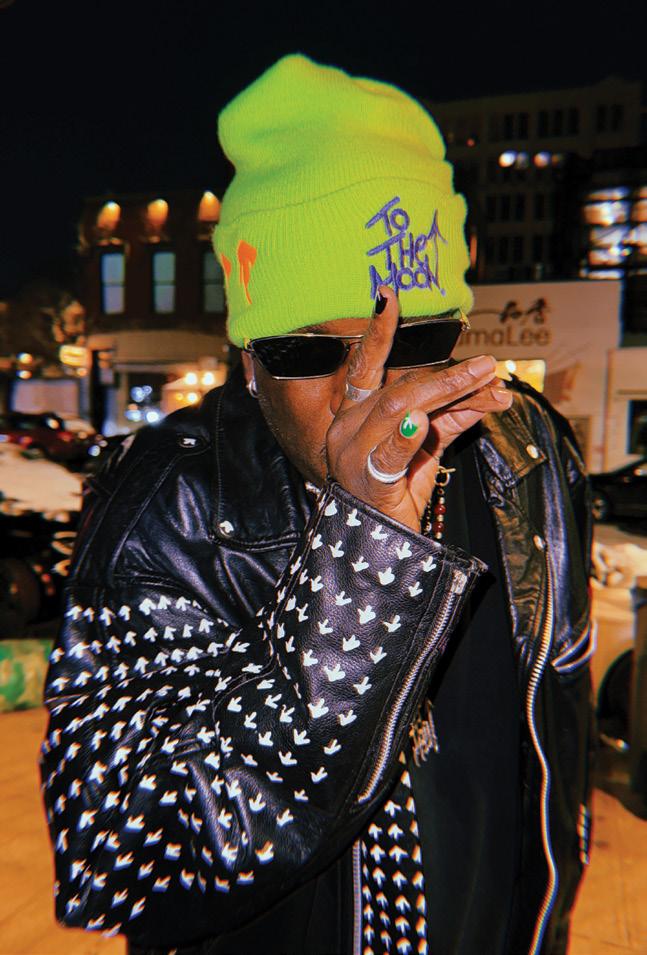


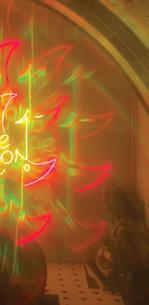



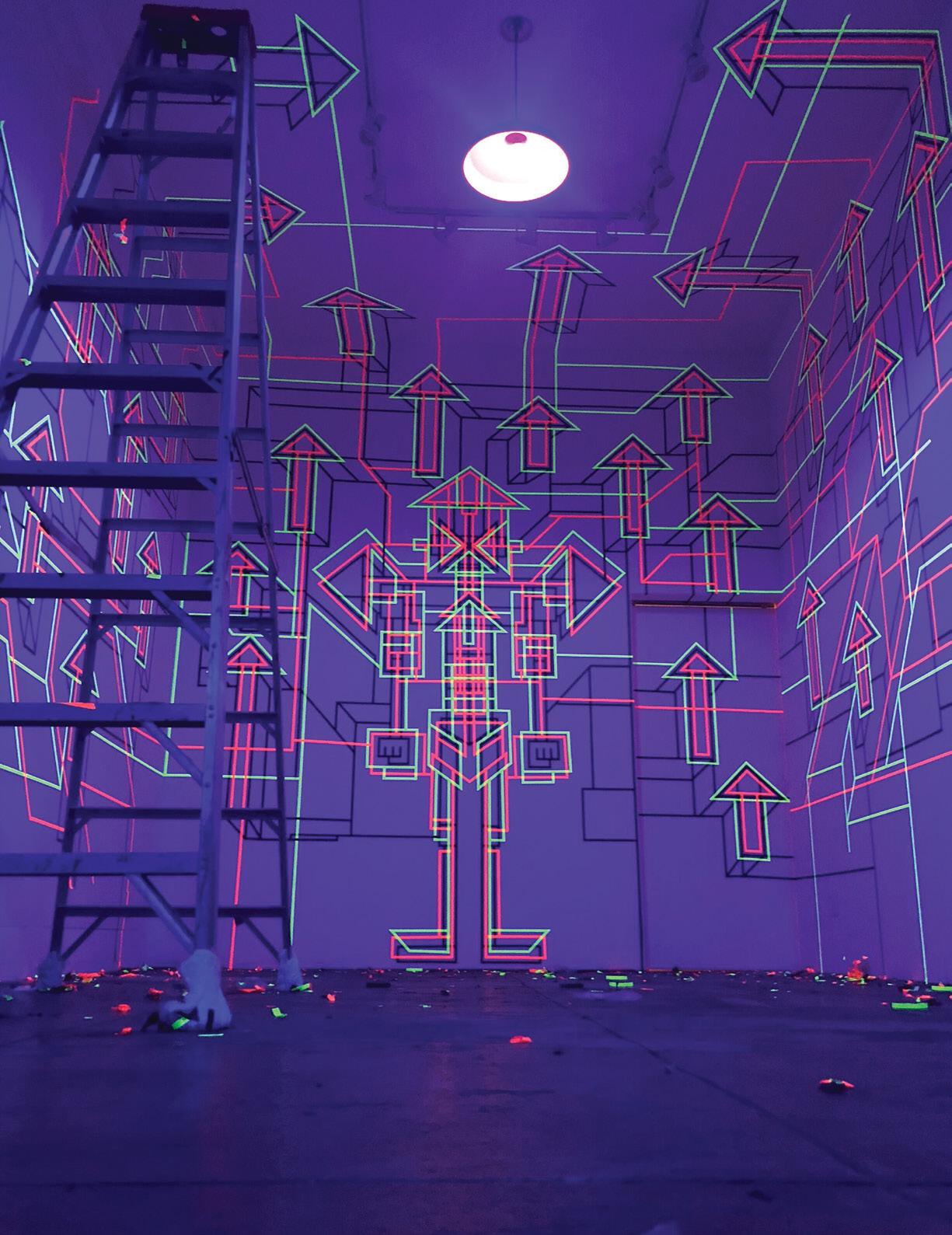

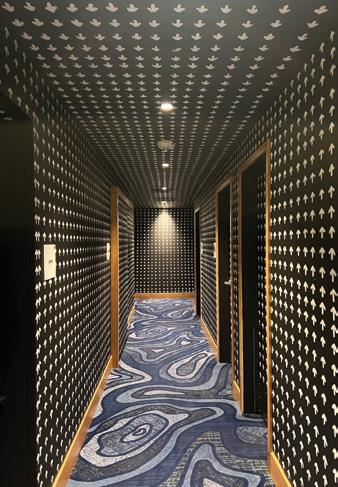
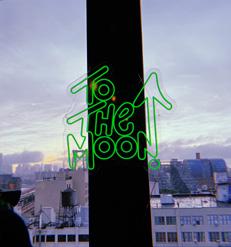


by Alan Greenwald
FISHKILL, NY
Why did you become a Budtender?
When I was growing up, my mom had Crohn’s Disease and Lupus and was sick quite often. Cannabis was one of the things that allowed her to be a mom and helped her feel better. For me, becoming a budtender was easy since I had already been doing retail sales for the past seven years. So, last October, as soon as dispensaries started popping up in the area, and when I saw an opening at Gratitude Buds, I knew it would be an instant fit for me.
What is the most rewarding aspect of being a Budtender?
Definitely helping people like my mom who have health conditions they’re dealing with. It’s great to help them find the best way to use cannabis that works for their needs.
What’s your most memorable sale or customer you served since starting as a Budtender?
There was a time when a customer was short a dollar or two, so I helped him out by taking the money he needed out of my tip jar. The next time he returned, he gave me a $10 tip!

What are your observations of the retail cannabis market in Fishkill and what makes it unique compared to New York City and other larger markets?
It feels like there are more regulars. There’s more of a community and a homier aspect of it. Some people come in here and tell me that it’s like therapy every time they come to Gratitude Buds. We always ask everyone how they are, and we want to make that connection that’s more than just, buy this and leave. It’s what’s going on with your life, or what do you need to help you get through it and make it a bit easier. I think the cannabis industry is going to blow up. You can’t go outside anywhere in the City without smelling some weed—I feel like it’s going to get that way here, too. Dispensaries are popping up all over the place, but I think it’s just going to get better from there. I love that everything has to be grown, manufactured, and packaged in New York. I think we’re building a community where it’s fun to go to different places and try different things. Every dispensary is going to have their own unique menu, and that’s pretty cool.
What are your favorite products?
I’m particularly impressed with our infused drinks, pre-rolls, and the ‘Off Hours’ edibles are exceptional.
At The Other, we believe that behind every great cannabis experience is a knowledgeable, passionate budtender. You—our devoted readers—vote for your favorite budtender. The budtender with the most votes gets featured on The Other’s website with an in-depth profile and photo shoot. Every quarter, we’ll showcase the top budtenders in our print edition, giving you a chance to get to know the faces shaping our local cannabis culture.
To nominate your favorite budtender, scan the QR code:


1. NY state mountains
2. Brooklyn’s _____ Square, cultural hub
3. Synonym for stoned (think “oven”)
4. Elevated Manhattan linear park
5. A soilless growing method
7. Hand-rolled smoke
9. Historic Lower Manhattan street
14. Environmental, or a go color
16. Sour _____, NYC strain
17. To inhale over a line, like in the classic song.
18. Busy Chinatown/SoHo street
6. Rastafarian’s herb, but not from Jamaica
8. Upstate cultivation region
10. A type of cannabis concentrate
11. Terpene with a lavender-like aroma
12. A sticky, organic compound
13. SoHo street named after a little stream
15. What a plant does when it’s really happy
20. Creator of a weighty music venue in Woodstock
21. Cannabis compound
22. What you might get if you’re really high
24. Housing Works’ location
25. SoHo cross street
27. _____ Spring, Hudson River village
28. _____ Square Garden
29. Terpene that shares its name with a Hudson Valley evergreen
30. NY’s 1st Capital
31. _____ Market, Lower East Side food hall
38. Beacon’s contemporary art museum
39. Nature’s solar panel
40. LES street name - apples grow there
41. Cannabis cloud formation
42. A smoker’s best friend (besides cannabis, of course)
19. _____ King Mountain, Hudson Highlands peak
23. _____ State Building, NYC icon
26. Historic cement town
32. NYC’s Washington ___ Park, 420 gathering spot
33. _____ Park, FDR’s hometown
34. Historic uptown neighborhood
35. A type of cannabis concentrate
36. What you might say after an amazing hit
37. Metro-North _____ road, connects NYC to Hudson Valley
Check your answers here!



